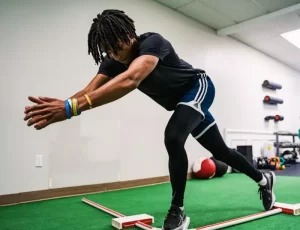By: Terry Abrams
When it comes to sports, injuries play a huge part. As much as athletes try to avoid these injuries, accidents do happen unfortunately. The results of these injuries have ended athletes’ careers or prevented them from playing games. Physical therapy helps athletes to reduce pain, improve overall health and prevent reoccurring injuries. Sports therapy is a segment of the global healthcare industry that has recently become quite popular due to it’s applications and positive results in sports. A physical therapist specializing in sports medicine has methods for bringing your body back from injury to get your body back into peak performance. Assessing what went wrong in your body allows them to formulate how to fix it and give tangible methods for strengthening the injury.
Physical therapy (PT), also known as physiotherapy, is one of the allied health professions that, by using mechanical force and movements (biomechanics or kinesiology), manual therapy, exercise therapy, and electrotherapy, remediates impairments and promotes mobility and function. Physical therapy is used to improve a patient’s quality of life through examination, diagnosis, prognosis, physical intervention, and patient education, performed by a physical therapist.
Physical therapists are closely involved in the care and wellbeing of athletes including recreational, semi-professional (paid) and professional (full-time employment) participants. This area of practice encompasses athletic injury management under 5 main categories:
Acute care – assessment and diagnosis of an initial injury
Treatment – application of specialist advice and techniques to encourage healing
Rehabilitation – progressive management for a full return to sport
Prevention – identification, and address of deficiencies known to directly result in, or act as precursors to injury, such as movement assessment
Education – sharing of specialist knowledge to individual athletes, teams or clubs to assist in the prevention or management of injury
For more info visit: www.cardioflextherapy.com

About the Author



No comments:
Post a Comment